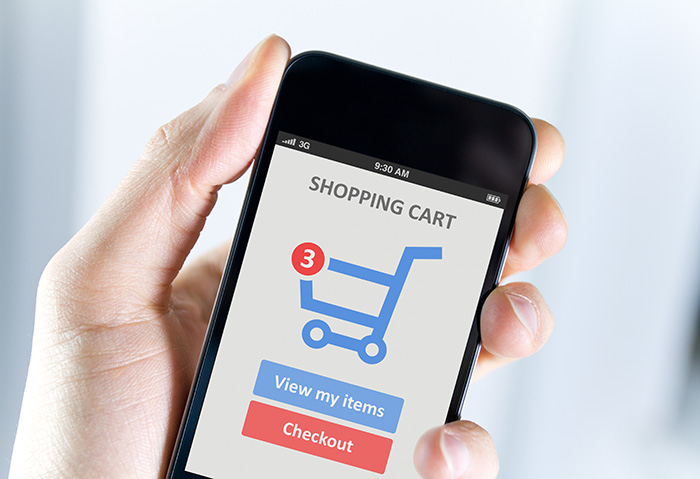Be Aware of Your Privacy and Security When Shopping Online
 Shopping online is one of the most convenient things that modern technology has afforded us. For shoppers who don’t like the hassle of walking around crowded places or lining up in long queues, online shopping is the best alternative to shopping malls and other public venues. Additionally, in recent years, shopping online has become much more convenient via mobile payment solutions. But while you may enjoy scouring the Web for cheap deals in the comfort of your home, your shopping accounts and financial transactions could be compromised by countless prying eyes. Due to the nature of e-commerce and the thousands of options for online shops, it can sometimes be hard to tell if you’re dealing with a legitimate merchant or a bogus one.
Shopping online is one of the most convenient things that modern technology has afforded us. For shoppers who don’t like the hassle of walking around crowded places or lining up in long queues, online shopping is the best alternative to shopping malls and other public venues. Additionally, in recent years, shopping online has become much more convenient via mobile payment solutions. But while you may enjoy scouring the Web for cheap deals in the comfort of your home, your shopping accounts and financial transactions could be compromised by countless prying eyes. Due to the nature of e-commerce and the thousands of options for online shops, it can sometimes be hard to tell if you’re dealing with a legitimate merchant or a bogus one.
Just as shoppers need to take security measures when shopping in brick-and-mortar stores, online users should also be aware of the risks involved when it comes to online transactions. Ideally, we all think of securing our credit card information, and that’s good. But that’s not the only privacy concern we should think of.
In light of Data Privacy Day, we underline the importance of protecting your privacy when it comes to shopping online. Web threats are no longer limited to malware and scams. Attackers know that the more you do any online activities, you also increase the risk of revealing more information about yourself, especially when you’re looking to make a purchase. Hence, searching for items alone could lead you from one website to another, and this increases the chance of stumbling upon a malicious one.
Now that data breaches and incidents of hacking and identity theft are becoming more common, online shoppers should protect themselves against likely attacks that could threaten their privacy. There are a number of different methods that can be used to invade a user's privacy, and sooner or later, an unaware user is bound to run into threats such as phishing, online scams, spam, Internet fraud, and malicious URLs. Here are general tips on how to secure and maintain your privacy and security when shopping online:
- Double-check URLs – if you hadn’t already bookmarked your favorite shopping site’s payment page, and still rely on typing in names, always double check the URL as cybercriminals can easily replace payment pages and apps with fake ones. One way to tell if a site is secure is by checking the security lock indicator (HTTPS instead of HTTP). The former means a secure one.
- Use an official online shopping app – if you’re an avid mobile shopper, make sure to use the official online shopping app and avoid third-party apps for secure transactions.
- Always use strong and secure passwords – attackers can easily hack online accounts including banking and social accounts. Since these accounts contain sensitive and personal details, it’s important that you use unique hard-to-crack passwords across all devices and change them regularly.
- Use a secure network – if you’re using a mobile device to pay, make sure that you are using the official payment app, and that you’re accessing a secure and private network.
- Think before you click – being scammed online could translate to an eventual invasion of your privacy. Before you click on unverified posts, messages, or ads, think twice and stay away from suspicious-looking offers. They’re most likely used as bait to lead you to phishing sites among others. Check with official sites rather than relying on social media posts.
Like it? Add this infographic to your site:
1. Click on the box below. 2. Press Ctrl+A to select all. 3. Press Ctrl+C to copy. 4. Paste the code into your page (Ctrl+V).
Image will appear the same size as you see above.
Messages récents
- The Next Phase of Cybercrime: Agentic AI and the Shift to Autonomous Criminal Operations
- Reimagining Fraud Operations: The Rise of AI-Powered Scam Assembly Lines
- The Devil Reviews Xanthorox: A Criminal-Focused Analysis of the Latest Malicious LLM Offering
- AI Security Starts Here: The Essentials for Every Organization
- Agentic Edge AI: Development Tools and Workflows

 Complexity and Visibility Gaps in Power Automate
Complexity and Visibility Gaps in Power Automate AI Security Starts Here: The Essentials for Every Organization
AI Security Starts Here: The Essentials for Every Organization Ransomware Spotlight: DragonForce
Ransomware Spotlight: DragonForce Stay Ahead of AI Threats: Secure LLM Applications With Trend Vision One
Stay Ahead of AI Threats: Secure LLM Applications With Trend Vision One